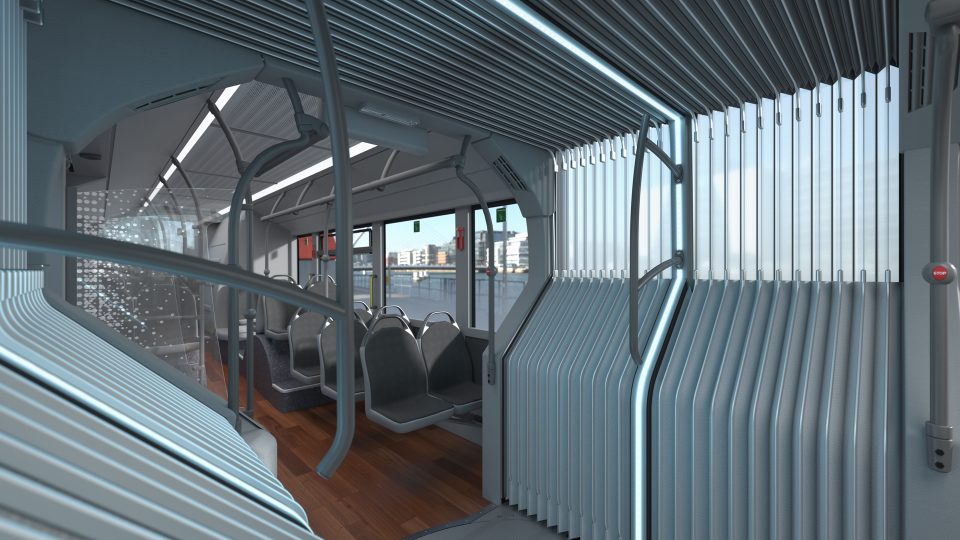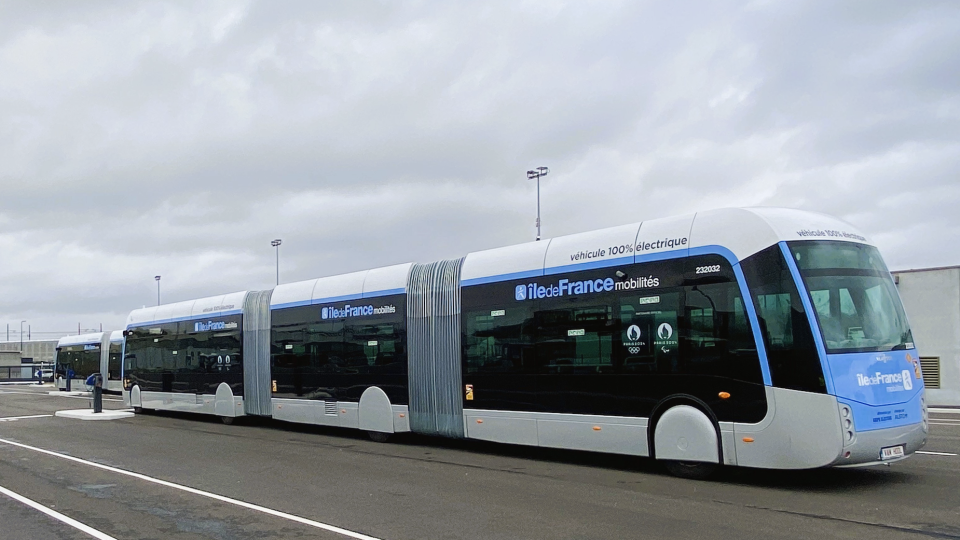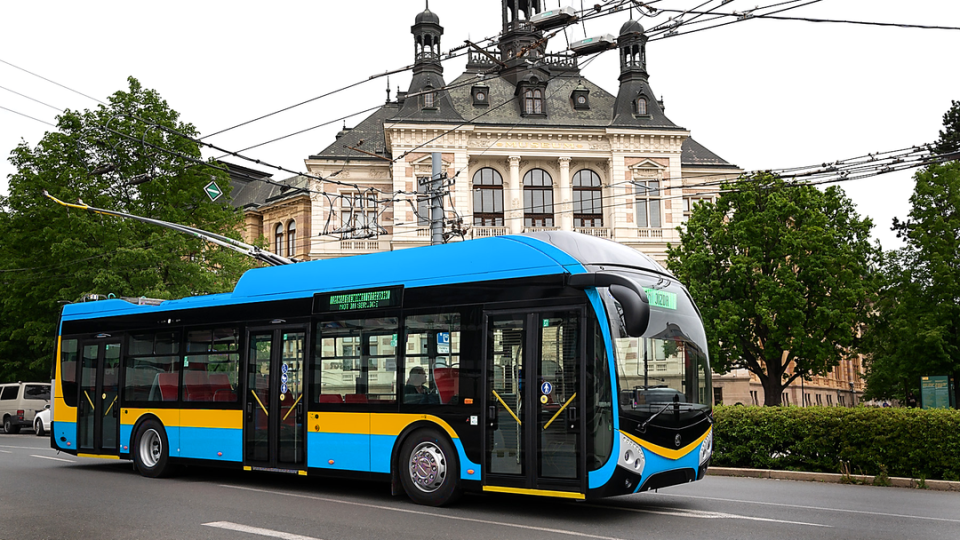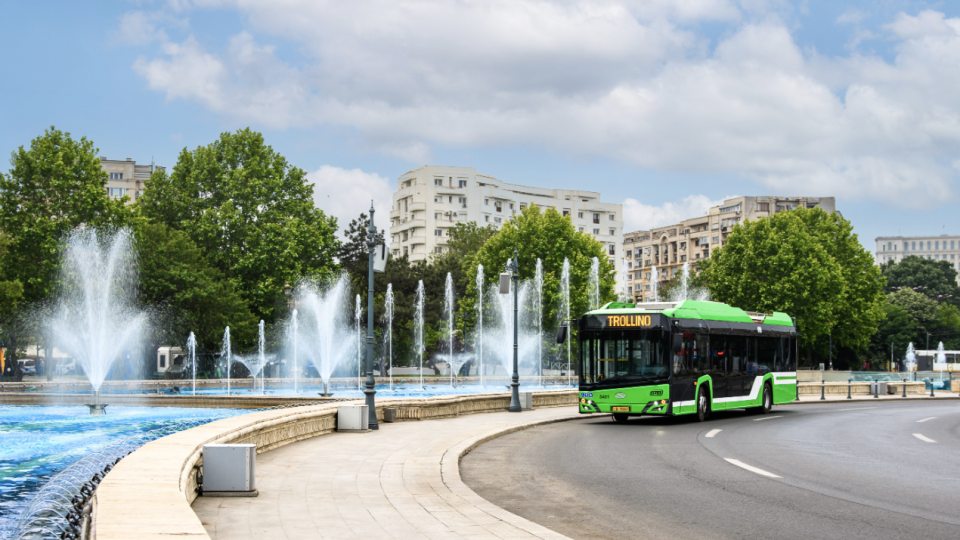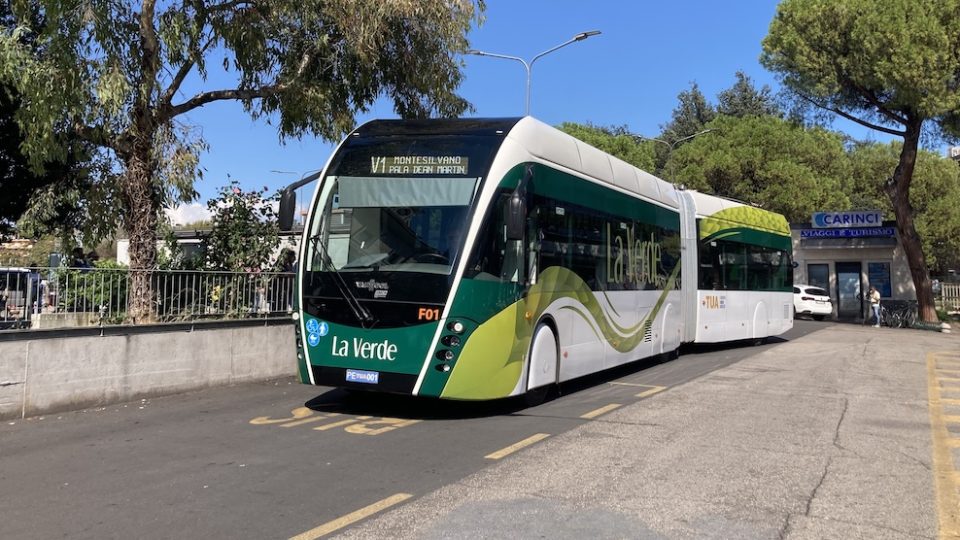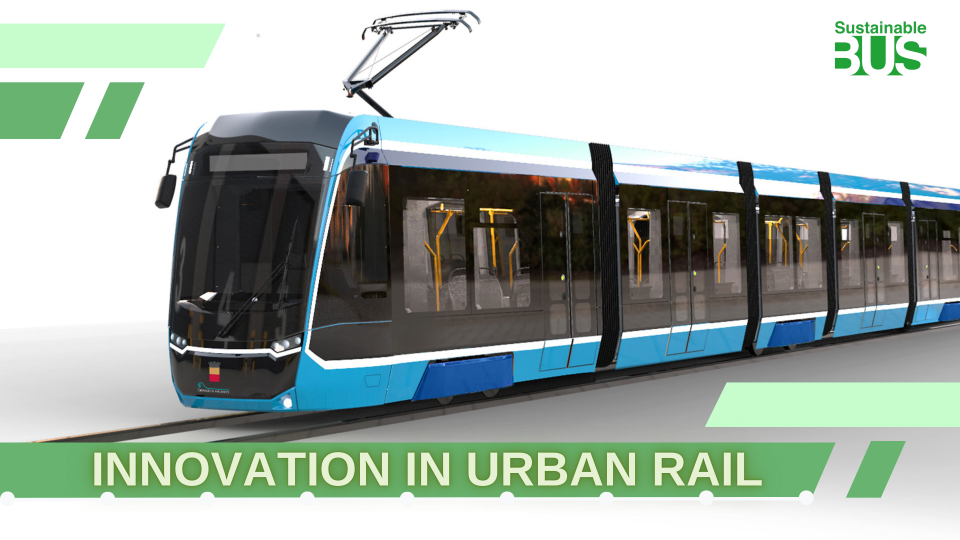The new tram network in Angers, with two new (rainbows) lines
by Stefano Alfano The extension of the tramway network in Angers, with the two new B and C lines inaugurated on Saturday 8 July 2023, should not be seen as just a technical factor, but as an opportunity, proposed by the Community Angers Loire Metropole for citizens to change their habits, to the benefit of […]
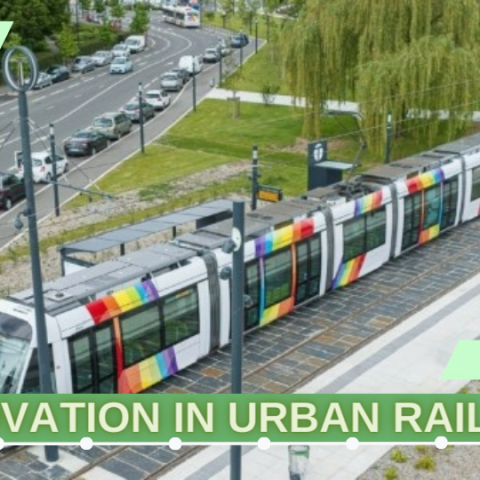
by Stefano Alfano
The extension of the tramway network in Angers, with the two new B and C lines inaugurated on Saturday 8 July 2023, should not be seen as just a technical factor, but as an opportunity, proposed by the Community Angers Loire Metropole for citizens to change their habits, to the benefit of environmental sustainability and also the cost of using a car.
The Angers tramway (Tramway d’Angers in French) is the tramway network of the French city of Angers, a municipality of 151,689 inhabitants in the Pays de la Loire. This is a welcome return, as a tramway network was also active in Angers, opened in 1896 and then closed in 1949.
The project for a new tramway line was considered positively and the first feasibility studies were carried out between 2002 and 2003. After four years of work, Line A was inaugurated on 25 May 2011, nicknamed the ‘rainbow line’ due to the distinctive livery of the trams. The 2011 fleet consisted of 17 Alstom Citadis TGA 302s, the design of which was the subject of a special study.
The design of the Angers Loire Métropole tram was created by Alstom Transport in parnership with the agency RCP Design Global, based on an original idea from Angers Loire Métropole. The “rainbow tram design” was created as early as 2004, to communicate and inform the population of Angers about the progress of the project, and at the same time to gauge the population’s approval rating for a project that was certainly challenging, both on the technical side (such as the construction of the bridge over the river Maine and the numerous archaeological investigations) and on the financial side. . The high level of public acceptance and consensus prompted Angers Loire Métropole to pursue the idea, as a basis for the design considerations of builders.
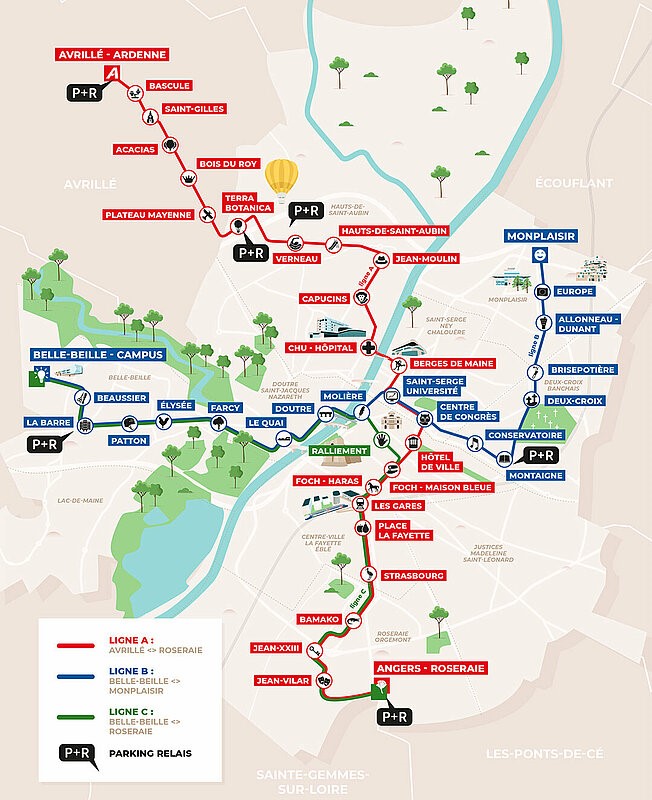
The interior design is designed to reflect the distinctive characteristics of the Anjou environment: a bucolic ceiling adorned with flowers from the low valleys of the Anjou, in the colours of the rainbow. The seating evokes the topographical reliefs of the Anjou round reliefs or the vegetal lines of cut wood.
The success with the public in the first 12 years of the line and the need for an ecological transition, with a different use of transport modes by citizens in their daily lives, convinced Angers Loire Metropole to build two new tram lines, the B and C. On this occasion, the network will be reorganised so that it is very easy to change from one mode to the other. The interchanges in the vicinity of the City Hall, the railway station and the Front de Maine Hospital Complex have been redesigned.
Angers, the new three tramway lines
From 8 July 2023, the inauguration date, the force network will consist of the three tramway lines A,B,C:
– A: Avrillé-Ardenne – Angers-Roseraie: The new route of tram line A was inaugurated in January 2021. Three new stations now offer access to the hypercentre, which serves the Saint Sergius University, the congress centre and the town hall.
– B: Belle-Beille Campus – Monplaisir: Starts at Belle-Beille and crosses the Maine on the Pont des Arts-et-Métiers. From Place Molière, take Rue Thiers, then Boulevards Ayrault and Carnot towards Monplaisir, passing in front of the Conservatoire.
– C: Belle-Beille Campus – Angers-Roseraie: Follows the route of line B from Belle-Beille to Place Molière. It then takes Rue de la Roë, Place du Ralliement, Boulevard Foch, the station, and continues towards Roseraie.
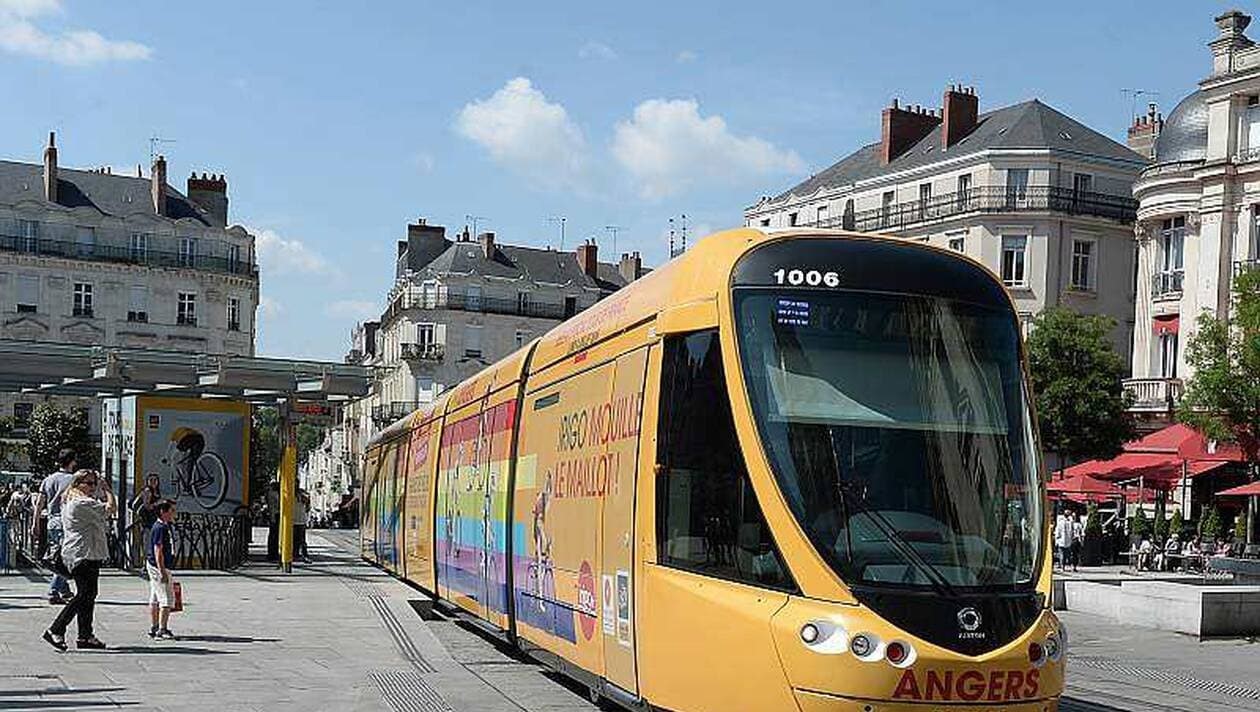
The success with the public in the first 12 years of the line and the need for an ecological transition, with a different use of transport modes by citizens in their daily lives, convinced Angers Loire Metropole to build two new tram lines, the B and C. On this occasion, the network will be reorganised so that it is very easy to change from one mode to the other. The interchanges in the vicinity of the City Hall, the railway station and the Front de Maine Hospital Complex have been redesigned.
The A and C lines overlap in the Angers – Roseraie section and the Doch – Maison Blue stop, while the B and C lines share the same section between Belle – Beille Campus and Moliere. The service arrives from about 5 a.m. to 0.45 a.m., with some minor variations depending on the lines. For each line, one passage is guaranteed every 14 to 15 minutes during daylight hours, rising to 7 on shared routes.
The network is supplemented by 4 force bus lines, 3 of which also go to the hinterland: line 1 to Trelaze’, line 2 to Saint – Barthélemy d’Anyou, line 3 to Les Ponts de Cè, line 3 to Beauconze’. The L5 circular line is also reinforced. The offer is completed by 8 local bus lines and 5 ‘Bus express’ lines, three of which are new, New bus lines will serve the business areas of Océane (32), Pole 49 (11), La Chevallerie (34), Atlantic (35 and 36), Hoirie (4), Orgemont (5 and 11), Ecouflant (9 and 12) and Belle-Beille (tram and bus).
The tram lines will meet most of the car lines. The night line ‘Irigo nuit’, named after Irigo, the network operator, is also confirmed. The investment for the new tramway lines amounts to EUR 300 million, and the operating budget is expected to increase by 20 % each year.
For the new network, 20 five-car Citadis 302s with a length of 33 metres and a capacity of 210 passengers will be used, which have just been delivered by Alstom for EUR 55 million. They join Alstom’s existing fleet of 17 Citadis from 2011. All trams are equipped with APS underground power supply, as some sections of the lines are not equipped with catenary. . Alstom APS underground power supply was used on two parts of the line totalling 1.5 km (0.93 mi)[2] to avoid overhead lines in the centre of Angers and Avrillé. Angers is the third city to use this system, after Bordeaux and Reims.
The success with the public in the first 12 years of the line and the need for an ecological transition, with a different use of transport modes for citizens in their daily lives, convinced Angers Loire Metropole to build two new tram lines, the B and C. On this occasion, the network will be reorganised so that it is very easy to change from one mode to the other. The interchanges in the vicinity of the Town Hall, the railway station and the Front de Maine hospital have been redesigned.
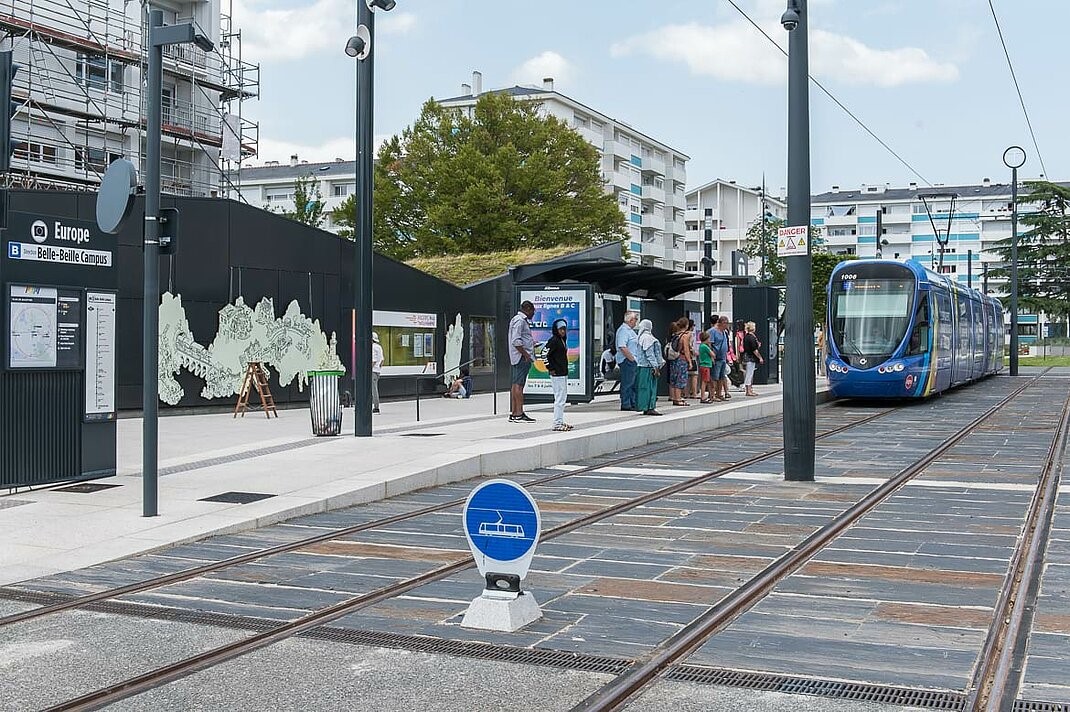
The new tram network in Angers is an important step towards improving both mobility and citizens’ habits. A network with attention to detail, both in terms of infrastructure and fleet, is of the latest generation, and the community’s efforts to convince citizens to use their cars less, or not at all, are appreciable. 35,000 passengers per day are expected.
“Recent studies show that each Frenchman produces an average of almost 10 tonnes of CO2 equivalent per year, a third of which comes from transport and especially from cars. However, three quarters of the effort to be produced does not rely solely on citizens, but on political and collective decisions’. A reminder for Corinne Bouchoux, Vice-President for Ecological Transition and Mobility, that “by 2050, our greenhouse gas emissions must be reduced by 60% and that it is this challenge that has led to the construction of the two new tram lines, on the one hand, and the reinforcement of the public transport network, on the other. “New services must lead to a change in behaviour in daily travel habits. We have invested almost EUR 300 million in the construction of the B and C tram lines and will increase our operating budget by 20 per cent, every year, to strengthen public transport, not for nothing, adds the elected representative. Every resident is invited to adopt the new Irigo network. I am thinking in particular of people who have the option of leaving their car behind, even if only one or two days a week”.
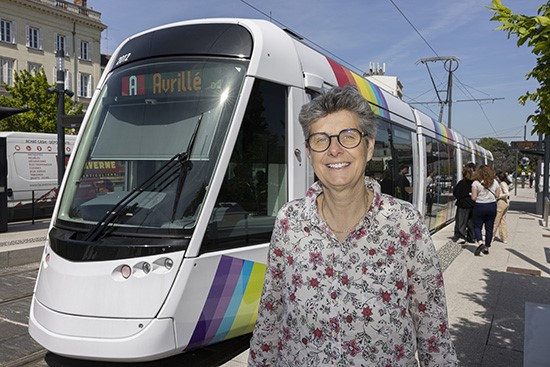
Credit Photo: Alstom, Angers Loire Metropole, France Ouest

